Signs of life after devastating mountain fire
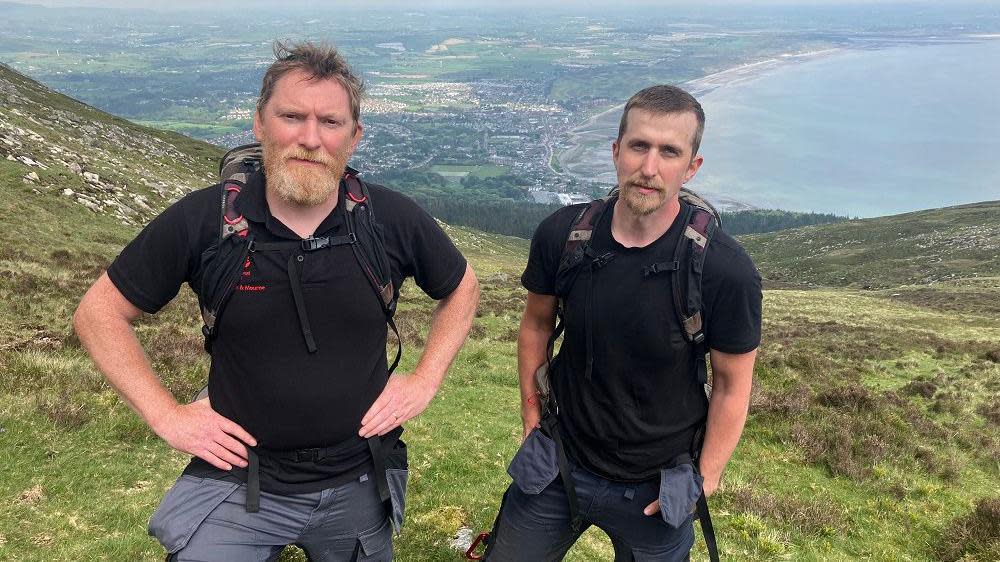
Just over three years ago Slieve Donard, the highest peak in the Mournes, went up in flames.
That fire burned long and deep, with plant and animal life paying a heavy price.
Since then efforts to revitalise the mountain have been ongoing – with conservationists saying progress has been made.
Full recovery, however, will likely take decades.
High above Thomas’ Quarry, a team from the National Trust has been working on that revitalisation.
James Fisher, the trust’s lead ranger, said the work is tailored to suit the scale of damage caused.
“Over 300 hectares of the upland habitat was burned," he said.
“In certain areas the burn went right down into the peat and the recovery has been slow.
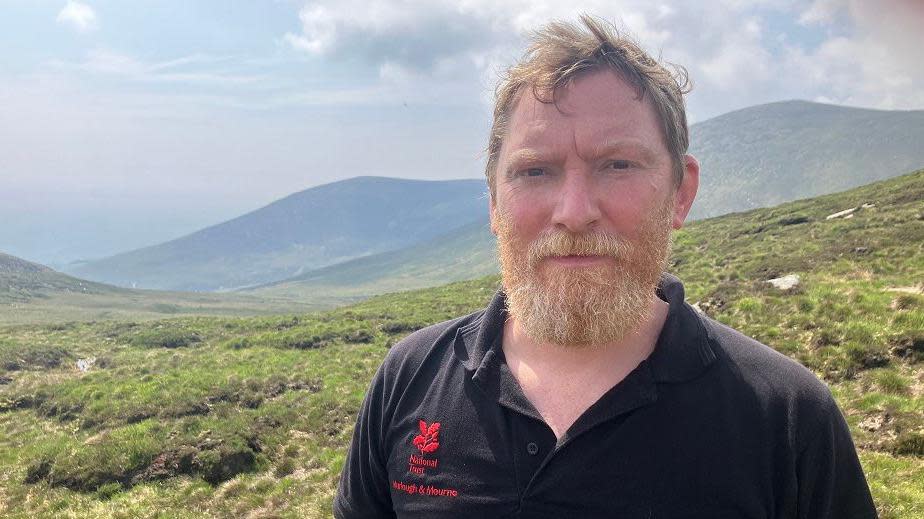
"Where we are now it was quite a quick burn through the valley – the woody heather burned but it didn’t go down into the ground.
“Further down the mountain we have introduced cattle to graze the purple moorgrass that has grown – it grew back first and can block other plants growing.
"So as it comes down, the heather comes back and we are building that back as it’s more beneficial."
Mr Fisher added: “We have timber dams up here – they are constructed to retain the water that would ordinarily flash off and those pools trap the water and the sphagnum mosses then grow back in those areas and we end up with an active raised bog where it had been an acid grassland.”
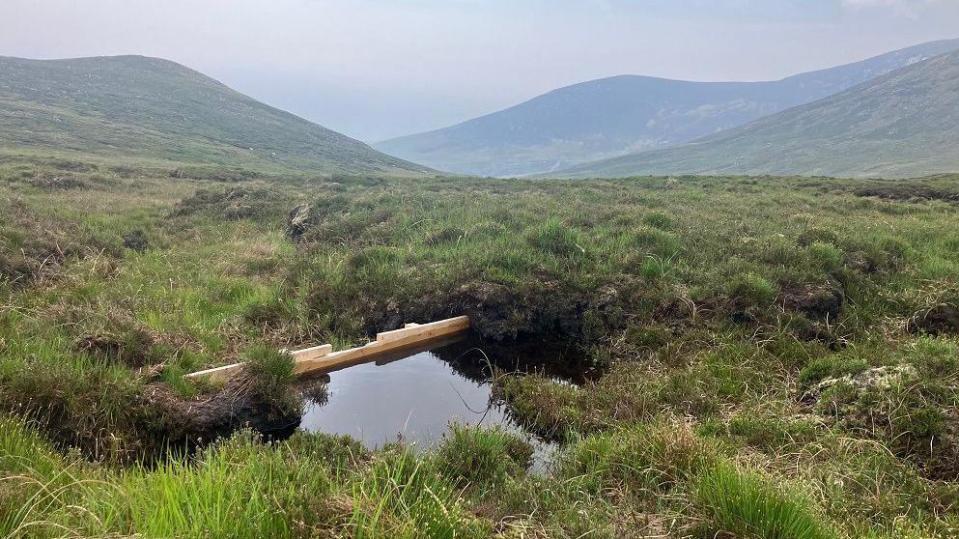
From a distance those dams resemble a sort of ad hoc staircase winding its way up the steep incline.
On closer inspection, they are not just filled with water but with an array of plant life.
Mr Fisher's colleague Linus Voksepp says the dams are already reaping dividends.
“The damming slows the water fall off the top of the mountain and that helps build up organic materia,l which is a good thing," he says.
"You can see the species we want to bring in starting to come back here.”
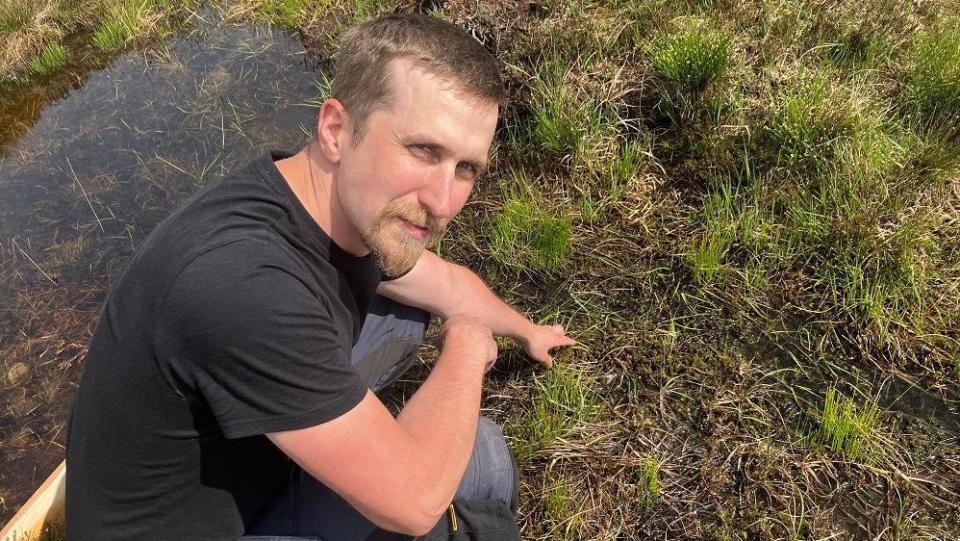
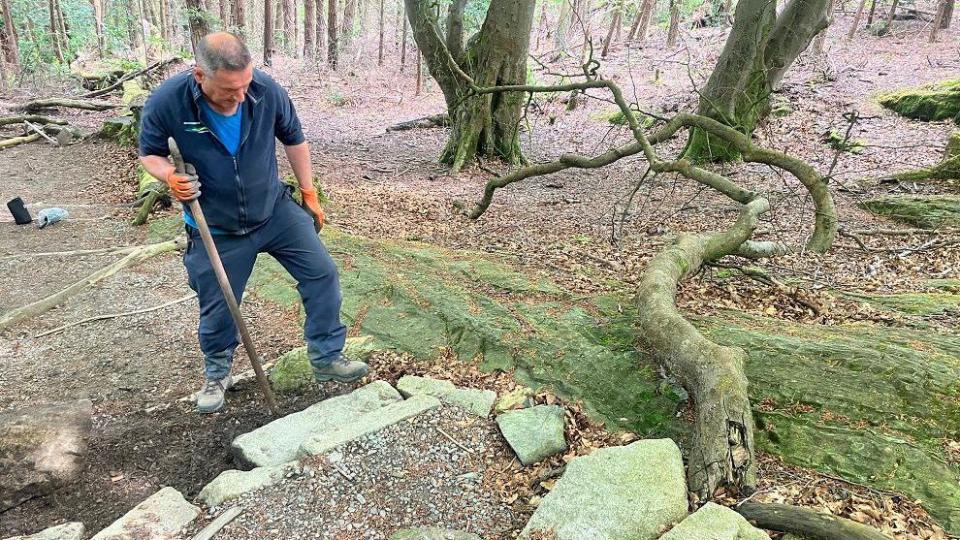
Further down the mountain – below the burn zone - a team of workers from the Mourne Heritage Trust is installing new trails made of local stone and wood.
Philip Savage from the trust said it is hoped the trail will prevent erosion and enhance visitor experience.
“This project along the Glen River – it’s for erosion control," he said.
“There are counters at the bottom between the two bridges and there is a serious drop off in traffic as you go up – so down below needs a lot of effort put in to it.
“We’ve covered up all the erosion, so if things start to grow on the side – grasses and ferns and heather - I think that’s a symptom of success that people are staying on the path.”
Hens rush to the rescue
So far this year there have been fewer fires in the Mournes – anecdotally at least. But the problem persists.
Last week 64 firefighters dealt with a blaze near Hilltown.
Near Rostrevor Maria O’Grady, Bridget Higgins and other members of the Hiking Hens Walking Group also rose to the occasion to put out an abandoned fire.

“We were coming down from our hike at Pierce’s Castle with all of our hens and on the way home we came across a campfire that was blazing at Yellow Water.
"So we all rushed to our cars and got whatever water we had," Ms O'Grady said.
"Luckily, we also had the water source of the river – but it took us 30 minutes to put it out before we felt safe that it was out.
"And when we got home we notified the Mourne Rangers so they knew what had happened.”
In a statement, the Northern Ireland Fire and Rescue Service said wildfires take "a massive toll on resources" and "put people’s lives at risk".
Group Commander Paul Morrow said: “Every year our fire and rescue service is faced with fires in the countryside that have been devastating to our environment and wildlife.
"Very often these fires are started deliberately.”
The appeal of this place is undeniable – and the challenge to protect it never ending.

